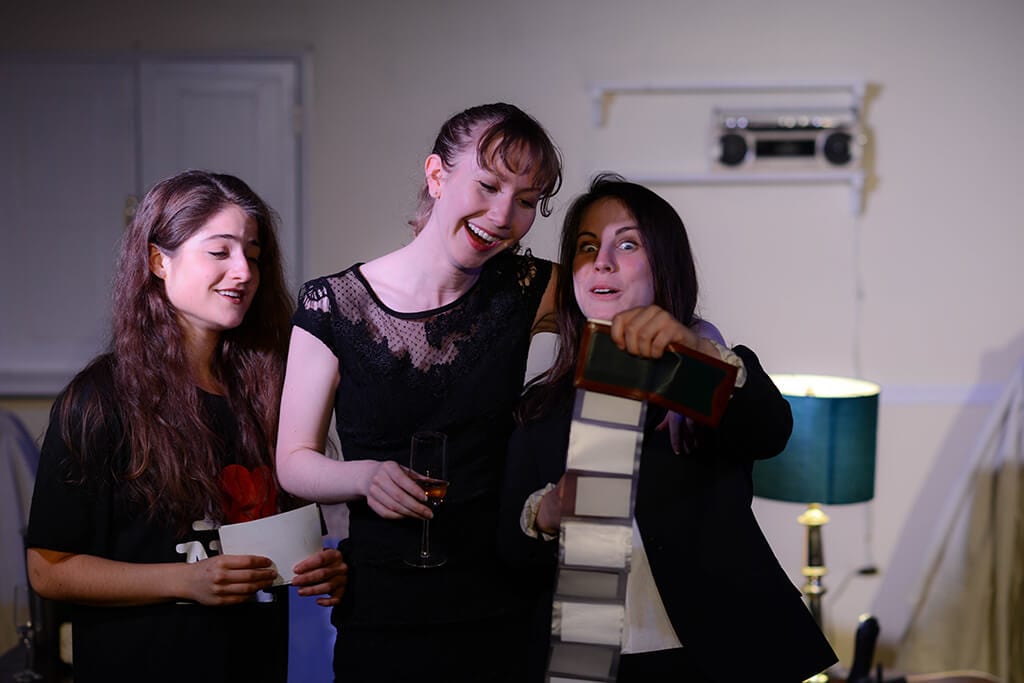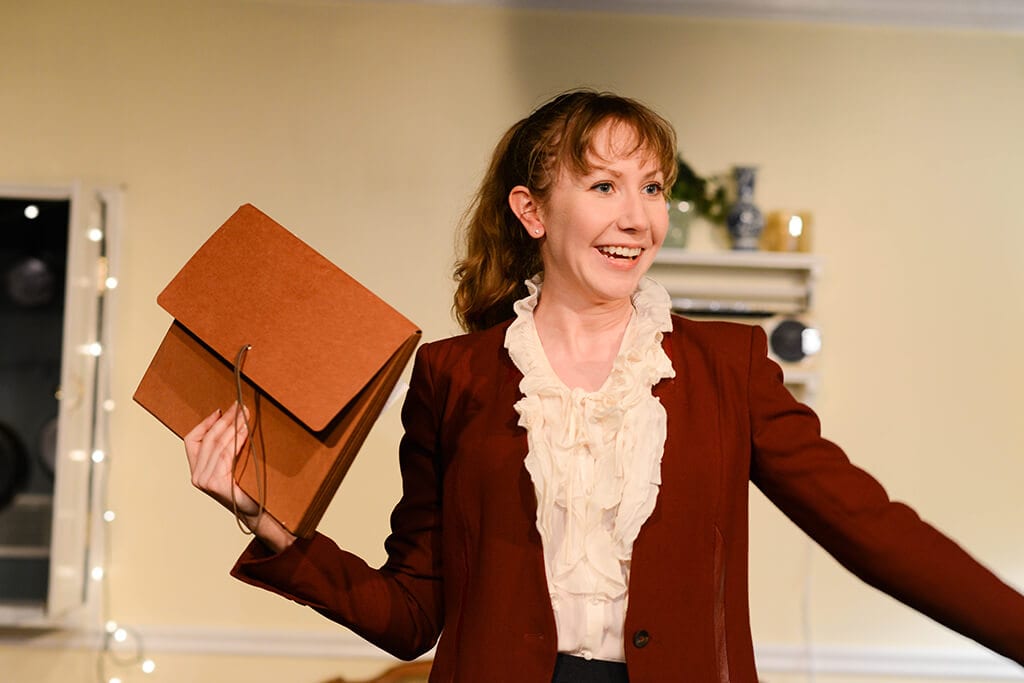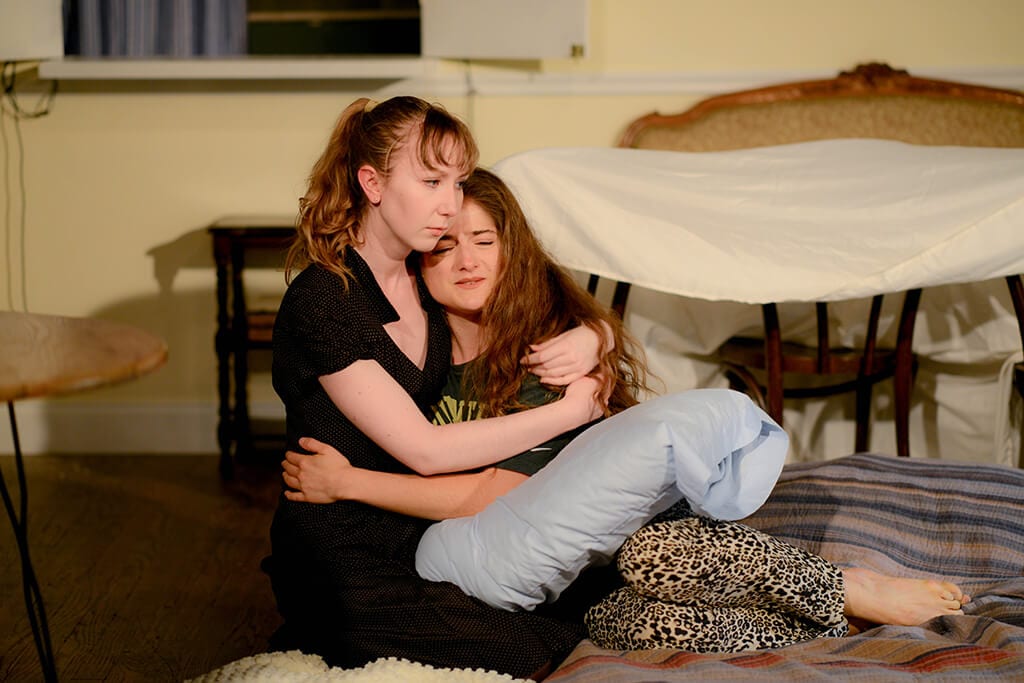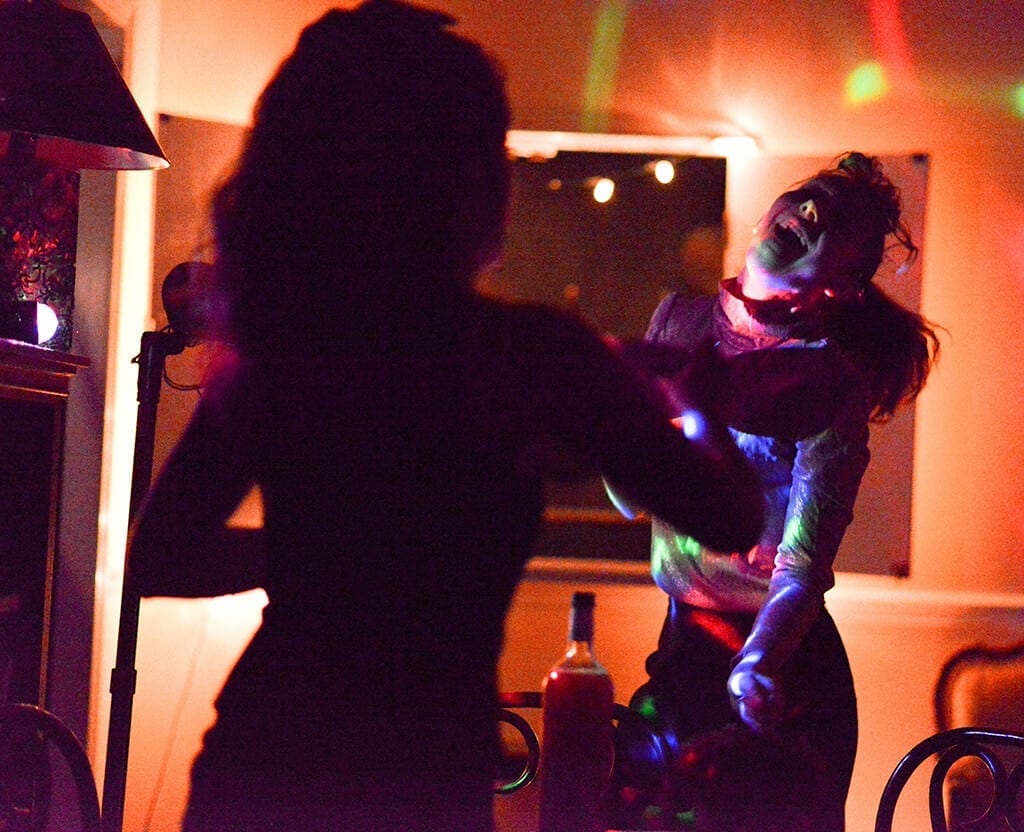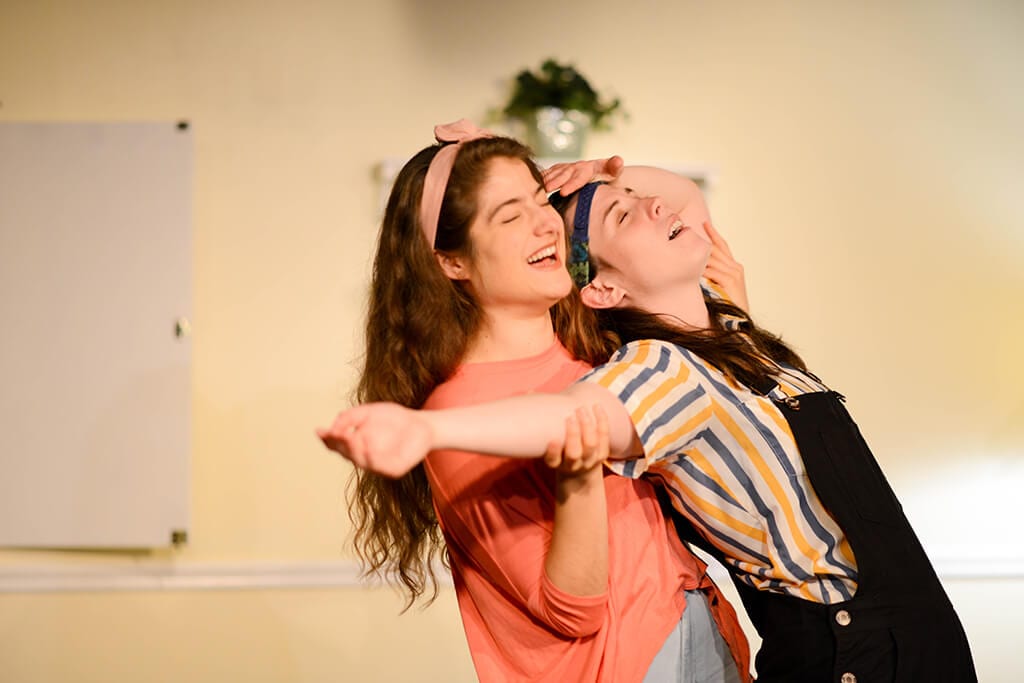The show is much more than just this. But it is an awful lot of fun to relive the giddy sense of possibility when college friends set up their first house off-campus. Scoring furniture, placing the posters, stringing some lights, and deciding “how we shall live”–whether as isolated housemates or really together– Di and Viv and Rose improvise, scrape, and dance their way through domestic adventures and ultimately love and career prep hurdles throughout the first half.
Drawn a little too sharply (but very entertainingly) as types, Viv (Raven Pierson) is the serious intellectual feminist who “dresses like it’s the war” in long skirts and cardigans, Di (Olivia Levine) is the overalls-wearing, grounded, jocky lesbian, and Rose (Leslie Erin Roth) is the impulsive, fun-loving, heart of the show. It’s like a BBC Sex and the City prequel (a compliment in my book– I love each of those ingredients). All three British-trained actors bring us crystal clear, minutely well observed, contrasting characterizations that set up the engine of the play. Rose is a veritable symphony of cute, surprised, ironic, and selectively adorable quirks. Viv keeps a bit more to herself until she feels the need to lecture. Di is friendly but tells it like it is. Together they must scold and judge each other and then not judge and just support and celebrate until their jagged pieces interlock into a lifelong bond.
Bullmore gives them witty but entirely plausible dialogue as they define themselves and each other, and permeates this period in their lives with sex-positivity and frankness, mostly. It’s a contemporary coming-of-age story from a purely female perspective that we so rarely get on stage. We also get a surfeit of Britishisms that don’t translate but amuse nonetheless (e.g. “proud as a lupin” and something called “Dundee cake” sent by “Mrs. Di” that we clearly must try).
Their bond is tested when one of the three experiences sexual violence. It isn’t hyped or exploited mawkishly; the pain and consequences are rather woven into the fabric of their lives. From that point on, the play explores the deeper value of friendship and human connection generally, as we see the life choices of the three young women unfold. It’s tricky ground for the playwright–steering between melodrama and Hollywood rom-com–and pretty successfully so. We really do want to see how they turn out, and I must say we miss them when the show is over. TV serial adaptation anyone?
Reilly Horan’s set cleverly turns the bare space into bare student housing, with a yard sale’s worth of cushions and bric-a-brac for the girls to rearrange through the play’s seventeen scenes. It almost never feels long with the exception of an oddly placed intermission that falls after the major action of the first half is already resolved, turning the rest of the play into epilogue.
Look–we laugh and cry, we think about life. We deal with sex, sexual identity, and violence. If not one for the ages, it’s a pretty darn good night in the theater.
I had the pleasure of seeing the show with PlaysToSee.com reviewer Laura Vogels whose insights and life experience as both a female person and a one-time college student in England contributed to this review.

